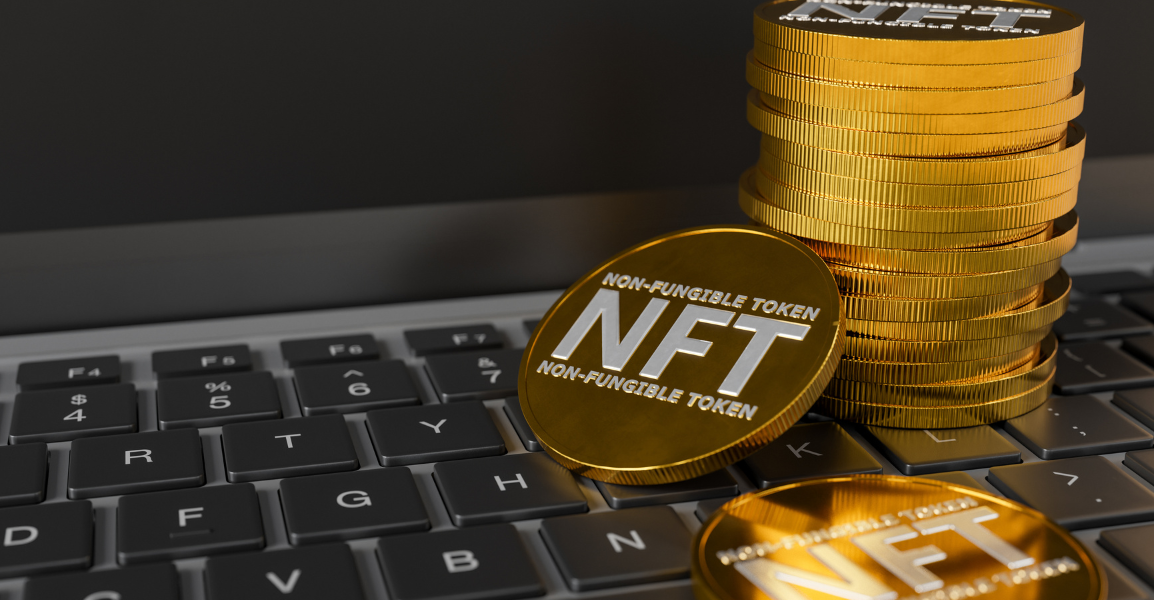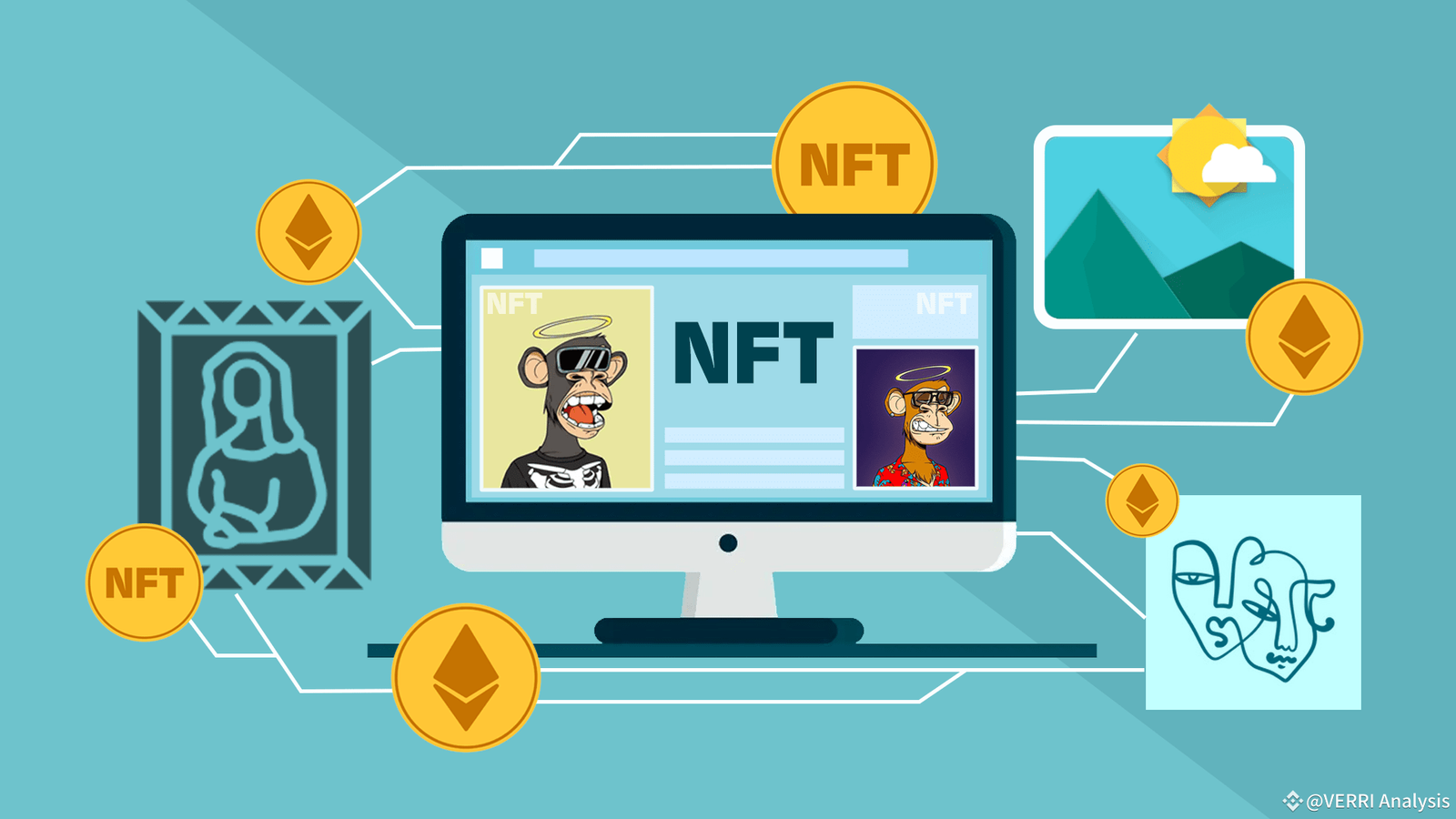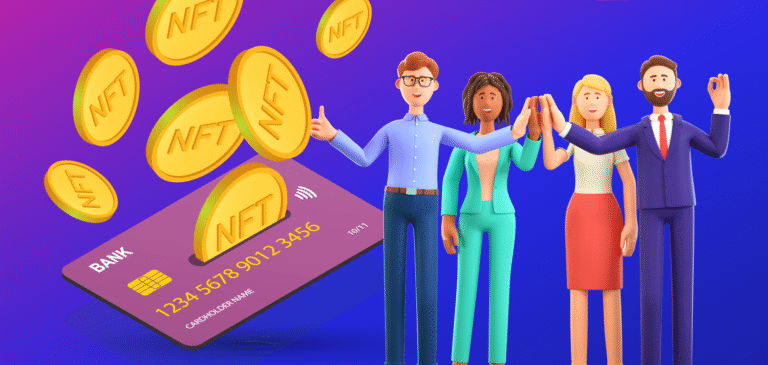The world of Non-Fungible Tokens (NFTs) has exploded in popularity, but many newcomers struggle with the traditional crypto-first approach to purchasing digital assets. If you’re wondering how to buy NFTs with a credit card, you’re not alone. This payment method has become increasingly popular as it eliminates the need to navigate complex cryptocurrency exchanges before making your first NFT purchase.
Learning how to buy NFTs with a credit card opens doors to the digital collectibles market without requiring extensive blockchain knowledge. Major NFT marketplaces now accept credit cards directly, making it easier than ever to start your digital art collection, invest in gaming assets, or acquire utility tokens. This comprehensive guide will walk you through every step of the process, from selecting the right platform to completing your first secure transaction, ensuring you can confidently enter the NFT space using familiar payment methods.
What Are NFTs and Why Are They Worth Buying?
Non-Fungible Tokens represent unique digital assets verified on blockchain networks, primarily Ethereum. Unlike cryptocurrencies that are interchangeable, each NFT possesses distinct characteristics that make it irreplaceable and verifiable.
Understanding the NFT Market Landscape
The NFT ecosystem has evolved dramatically since its inception, creating multiple categories of digital assets:
Digital Art and Collectibles: Original artworks, profile pictures, and limited edition collections dominate the market. Artists like Beeple and collections like CryptoPunks have established NFTs as legitimate art forms.
Gaming and Virtual Assets: Play-to-earn games utilize NFTs for in-game items, characters, and virtual real estate. These utility-driven NFTs provide ongoing value through gameplay mechanics.
Music and Entertainment: Musicians and creators use NFTs to sell exclusive content, concert tickets, and fan experiences, creating new revenue streams.
Virtual Real Estate: Metaverse platforms like Decentraland and The Sandbox sell virtual land parcels as NFTs, with some properties selling for hundreds of thousands of dollars.
Investment Potential and Market Dynamics
NFT investments have shown remarkable growth potential, though the market remains volatile. Understanding market cycles, creator reputation, and utility factors helps inform purchasing decisions.
The rise of celebrity endorsements, corporate adoption, and mainstream media coverage has brought NFTs to broader audiences. Major brands like Nike, Coca-Cola, and McDonald’s have launched NFT collections, legitimizing the space for traditional investors.
How to Buy NFTs with a Credit Card
Research and Choose Your NFT Marketplace
Selecting the right platform is crucial when learning how to buy NFTs with a credit card. Different marketplaces offer varying features, fee structures, and payment options.
OpenSea – The Market Leader
OpenSea dominates the NFT landscape with the largest selection and most liquidity. The platform integrated MoonPay and Wyre payment processors, enabling direct credit card purchases.
Key features include:
- Comprehensive collection of variety across all categories
- User-friendly interface suitable for beginners
- Robust search and filtering capabilities
- Mobile app for convenient browsing and purchasing
Nifty Gateway – Premium Curated Experience
Nifty Gateway focuses on high-quality digital art with celebrity and established artist collaborations. The platform offers seamless credit card integration without requiring crypto knowledge.
Benefits include:
- Curated selections from renowned artists
- Fixed-price drops and timed auctions
- Professional customer support
- Integration with traditional art market practices
SuperRare – Digital Art Focused
SuperRare specializes in single-edition digital artworks, positioning itself as a premium gallery for crypto art. The platform accepts credit cards for both primary and secondary market purchases.
Advantages:
- High-quality, vetted digital art
- Strong artist community and provenance tracking
- Social features connecting collectors and creators
- Transparent pricing and sales history
Account Creation and Verification Process
Most platforms require identity verification for credit card transactions to comply with financial regulations:
Initial Registration:
- Create your account using a valid email address
- Choose a strong, unique password
- Complete email verification through the confirmation link
- Set up two-factor authentication for enhanced security
Identity Verification (KYC):
- Upload government-issued photo identification
- Provide proof of address (utility bill or bank statement)
- Complete facial recognition verification if required
- Wait for approval, which typically takes 24-48 hours
Adding and Securing Your Payment Method
When adding credit card information, prioritize security and choose cards with favorable terms:
Credit Card Selection Tips:
- Use cards with no foreign transaction fees
- Choose cards offering purchase protection and fraud monitoring
- Consider cards with cryptocurrency-friendly policies
- Verify that your card issuer allows NFT marketplace transactions
Security Best Practices:
- Only enter payment information on secure (HTTPS) pages
- Verify that the website URL matches the official marketplace domain
- Use strong, unique passwords for your marketplace accounts
- Enable all available security features, including 2FA
Browsing and Evaluating NFTs

Successful NFT purchasing requires research and due diligence:
Collection Analysis:
- Research the creator’s reputation and previous work
- Examine the collection’s roadmap and utility promises
- Check community engagement on social media platforms
- Analyze floor prices and recent sales data
Technical Verification:
- Verify the NFT’s blockchain authenticity
- Check metadata and ensure proper IPFS storage
- Confirm the smart contract address matches official sources
- Review any utility or access rights included with ownership
Completing Your Purchase Transaction
The final purchase process involves several necessary steps:
Pre-Purchase Review:
- Double-check the NFT details, price, and creator information
- Understand all associated fees, including gas costs
- Verify your payment method and billing information
- Review the marketplace’s terms of service and refund policy
Transaction Execution:
- Add your selected NFT to the cart or click “Buy Now.”
- Confirm payment details and authorize the transaction
- Wait for credit card processing and blockchain confirmation
- Receive confirmation emails and transaction receipts
- Verify the NFT appears in your connected wallet or account
Best NFT Marketplaces That Accept Credit Card Payments
OpenSea Comprehensive NFT Ecosystem
OpenSea remains the go-to platform for most NFT buyers due to its extensive features and credit card support through integrated payment processors.
Payment Integration: OpenSea partners with MoonPay, Wyre, and other processors to enable seamless fiat-to-crypto conversion. Users can purchase ETH directly with credit cards and immediately use it for NFT acquisitions.
Platform Advantages:
- Largest NFT selection across all categories and price points
- Advanced filtering and search capabilities
- Mobile app with full functionality
- Integration with all major wallet providers
- Comprehensive creator tools and royalty systems
Considerations:
- High gas fees during network congestion periods
- Limited customer support during peak demand
- Some exclusive drops may still require pre-existing cryptocurrency
Foundation Artist-Centric Platform
Foundation focuses on supporting digital artists with a curated approach to NFT listings and integrated credit card payment options.
Unique Features:
- Invitation-only artist system ensuring quality curatio.n
- Reserve auction form encourages competitive bidding
- Strong community features connecting artists and collectors
- Integrated payment processing for seamless credit card transactions
Also Read: Top 10 NFT Marketplaces in 2024 By Coinindesk
Async Art Programmable Digital Art
Async Art specializes in programmable and evolving digital artworks that change over time based on various parameters.
Innovation Focus:
- Programmable art layers that can be individually owned and controlled
- Dynamic artworks that respond to external data sources
- Credit card payment integration for unique digital experiences
- Focus on cutting-edge digital art experimentation
Understanding Fees and Costs When Buying NFTs with Credit Cards
Breaking Down Transaction Costs
Understanding the complete fee structure helps you budget effectively for NFT purchases:
Credit Card Processing Fees: Most platforms charge 2.5% to 5% for credit card transactions, covering payment processor costs and currency conversion. These fees support the infrastructure required for traditional payment integration.
Platform Marketplace Fees: Marketplaces typically charge 2.5% to 10% commission on sales, funding platform development, customer support, and marketing efforts. These fees vary by platform and transaction size.
Blockchain Gas Fees: Ethereum network fees fluctuate based on network congestion, ranging from $10 during quiet periods to $200+ during high-demand events. These fees go directly to network validators.
Additional Costs: Some transactions may include creator royalties (typically 2.5-10%), payment processor currency conversion fees, and potential credit card foreign transaction fees.
Strategies for Minimizing Transaction Costs
Timing Optimization: Monitor gas fee trackers like GasNow or ETH Gas Station to identify low-cost transaction windows. Weekends and early morning hours typically offer lower fees.
Alternative Blockchain Consideration: Explore NFTs on lower-cost blockchains like Polygon, Solana, or Tezos, which offer significantly reduced transaction fees while maintaining security and functionality.
Batch Transaction Planning: Some platforms offer fee reductions for multiple NFT purchases in a single transaction, spreading fixed costs across various items.
Security Best Practices for Credit Card NFT Purchases
Protecting Your Financial Information
Security should be your top priority when learning how to buy NNFTs with a credit card:
Network Security: Always use secure, private internet connections for NFT purchases. Avoid public Wi-Fi networks that may be compromised or monitored by malicious actors.
Platform Verification: Verify marketplace legitimacy by checking for SSL certificates, reading user reviews, and confirming official social media accounts. Scam platforms often mimic legitimate marketplaces.
Payment Monitoring: Regularly monitor credit card statements for unauthorized charges and report suspicious activity immediately. Set up account alerts for large transactions.
Digital Asset Security
Wallet Protection: Consider using hardware wallets like Ledger or Trezor for storing valuable NFTs long-term. These devices provide offline storage and enhanced security features.
Backup Procedures: Securely store wallet recovery phrases in multiple offline locations. Consider using metal backup plates for fire and water resistance.
Software Updates: Keep all wallet software, browser extensions, and security applications updated to the latest versions to protect against known vulnerabilities.
Tax Implications and Record Keeping
Understanding NFT Tax Treatment
NFT purchases with credit cards may have different tax implications compared to crypto-to-NFT transactions:
Purchase Documentation: Maintain detailed records including purchase receipts, transaction hashes, marketplace confirmations, and USD values at transaction time.
Capital Gains Considerations: NFT sales may trigger capital gains tax obligations. The difference between the purchase price and the sale price determines taxable gains or deductible losses.
Professional Consultation: Consult with tax professionals familiar with digital asset regulations in your jurisdiction, as laws vary significantly between countries and states.
Record Keeping Systems
Digital Documentation: Create organized digital folders containing all NFT transaction records, including purchase confirmations, payment receipts, and blockchain transaction records.
Spreadsheet Tracking: Maintain detailed spreadsheets tracking purchase dates, amounts, fees, and current market values for portfolio management and tax preparation.
Common Challenges and Solutions
Credit Card Restrictions and Workarounds
Many financial institutions initially blocked cryptocurrency-related transactions, creating barriers for NFT purchases:
Bank Communication: Contact your card issuer before making large NFT purchases to inform them about planned transactions and request pre-approval to avoid declined payments.
Alternative Payment Methods: Consider using crypto-friendly credit cards, debit cards, or digital payment services that support NFT marketplace transactions.
Geographic Restrictions: Some platforms may restrict access based on geographic location due to regulatory compliance requirements. VPN usage may violate the terms of service.
Technical Issues and Troubleshooting
Network Congestion: During high-demand periods, transactions may fail or require higher gas fees for confirmation. Consider timing purchases during lower activity periods.
Platform Outages: Popular marketplaces occasionally experience downtime during significant NFT drops or high traffic periods. Having accounts on multiple platforms provides alternatives.
Wallet Connectivity: Browser extension wallets may require troubleshooting for proper marketplace integration. Clear cache, update extensions, and restart browsers if connectivity issues arise.
Advanced NFT Investment Strategies
Building a Diversified Digital Portfolio
Category Diversification: Spread investments across different NFT categories, including art, gaming, utility tokens, virtual real estate, and music, to minimize risk exposure.
Price Point Strategy: Balance high-value acquisitions with lower-priced pieces to manage risk while maintaining growth potential across different market segments.
Creator Relationship Building: Develop relationships with emerging artists whose work may appreciate over time. Early support often leads to access to future releases and community benefits.
Market Analysis and Research Techniques

Floor Price Monitoring: Track floor prices and trading volumes across different collections to identify undervalued opportunities and market trends.
Rarity and Trait Analysis: Use tools like Rarity.Toolss, OpenSea rankings, and trait distribution data to understand pricing dynamics within specific collections.
Community Engagement: Join Discord servers, Twitter communities, and Reddit forums to stay informed about upcoming drops, market sentiment, and insider insights.
Technical Analysis: Apply traditional investment analysis techniques to NFT markets, including support and resistance levels, volume analysis, and trend identification.
Future Trends in NFT Credit Card Integration
Emerging Payment Technologies
Layer 2 Scaling Solutions: Polygon, Arbitrum, and other layer two networks are reducing transaction costs while maintaining Ethereum security, making credit card NFT purchases more economical.
Cross-Chain Compatibility: New protocols enable NFT trading across different blockchain networks with simplified payment methods and reduced complexity for users.
Mobile Payment Integration: Smartphone apps are making NFT purchases more accessible through integrated credit card payment systems and simplified user interfaces.
Regulatory and Industry Developments
Consumer Protection Framework: Governments worldwide are developing comprehensive frameworks to protect NFT buyers while encouraging continued innovation in the digital asset space.
Traditional Finance Integration: Major payment processors like Visa, Mastercard, and PayPal are increasingly supporting cryptocurrency and NFT transactions through their networks.
Tax Reporting Improvements: Clearer tax guidelines and automated reporting tools are emerging to help collectors understand and meet their tax obligations more easily.
Conclusion
Mastering how to buy NFTs with a credit card has become an essential skill for entering the digital collectibles market without cryptocurrency complexity. This payment method democratizes access to NFTs, allowing anyone with a credit card to participate in this revolutionary digital economy.
The key to successful NFT purchasing lies in choosing reputable marketplaces, understanding fee structures, prioritizing security, and conducting thorough research before making investments. As the market continues evolving, credit card integration will likely become even more seamless and accessible.
Ready to start your NFT journey? Choose a trusted marketplace, complete your account verification, and begin exploring the vast world of digital collectibles. Whether you’re interested in digital art, gaming assets, or utility tokens, knowing how to buy NFTs with a credit card opens unlimited possibilities in the expanding metaverse economy.
Take your first step today by visiting a reputable NFT marketplace and setting up your account. With proper preparation and security measures, you can confidently navigate this exciting digital frontier using familiar payment methods.


